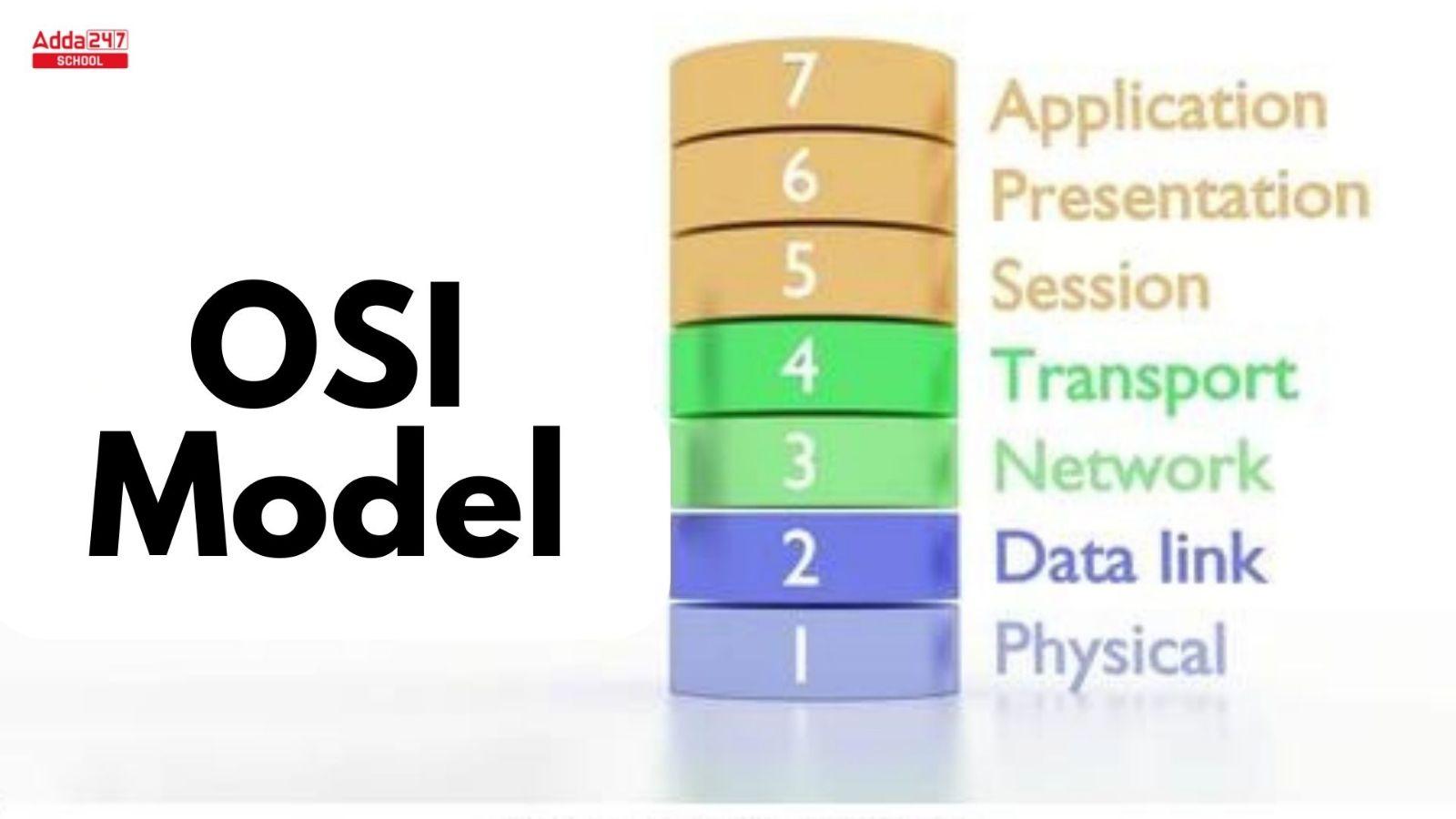OSI Model
OSI Model: In the field of computer architecture, the OSI model is considered the basic of computer architecture, which was adopted in the 1980s. If any computer science student wants to comment about computer architecture and networking and its functions and features, then it is necessary to read in the context of OSI model and TCP/IP model.
If you also want to get information regarding Open System Interconnection Model, then stay with us till the end of today’s article, because in today’s article, we will inform you all the important information regarding it.
OSI Model: Overview
OSI model is known as the Open Systems Interconnection (OSI) model. It is a conceptual framework for understanding and designing computer network architectures. OSI consists of seven layers, each of which is responsible for a specific set of features. We have listed a few features below-
- Physical layer: This layer defines the physical characteristics of the network, such as the type of cable or wireless transmission medium used, and the electrical and optical properties of the signals.
- Data link layer: Now, This layer of the OSI Model is responsible for the reliable transmission of data across the physical layer.
- Network layer: Now, This layer of the OSI model is responsible for the logical addressing and routing of data packets between different networks, and it defines protocols such as IP (Internet Protocol).
- Transport layer: Now, This layer of the OSI model provides end-to-end communication services for applications, including flow control, error recovery, and congestion avoidance.
- Session layer: This layer of the OSI model manages the establishment, maintenance, and termination of sessions between applications. It provides services such as authentication, encryption, and checkpointing.
- Presentation layer: This layer of the OSI model is responsible for the translation and formatting of data between different application formats, such as ASCII and Unicode.
- Application layer: This layer provides network services to applications, such as email, file transfer, and remote login. It is the layer at which end-user applications interact with the network.
Computer Full Form, Check All Related words & Abbreviations
OSI Model: Comparison between the OSI model and TCP/IP model
The OSI (Open Systems Interconnection) model and TCP/IP (Transmission Control Protocol/Internet Protocol) model are both widely used models for network communication. While both models describe the process of data communication, there are some differences between them.
Here are some comparisons between the OSI and TCP/IP models:
- Layers: The OSI model has 7 layers, while the TCP/IP model has 4 layers.
- Naming of Layers: The layers of the OSI model have specific names: Physical, Data Link, Network, Transport, Session, Presentation, and Application. The layers in the TCP/IP model are named: Network Access, Internet, Transport, and Application.
- Layer Functions: Each layer of the OSI model has a specific function, while the layers of the TCP/IP model have more general functions.
- Encapsulation: In the OSI model, it has very structured encapsulation. In the TCP/IP model, encapsulation is also used, but it is less structured than in the OSI model.
- Protocol Stacks: The OSI model describes a protocol stack, which is a set of protocols. And, This is used for communication between devices. The TCP/IP model is also a protocol stack, but it is simpler than the OSI model.
- Adoption: The OSI model was developed by the (ISO) in the 1980s, while the TCP/IP model was developed in the 1970s by the US Department of Defense.
OSI Model: How the OSI model improves network interoperability
The OSI model improves network interoperability by providing a standardized framework for network communication. It allows different devices and networks to communicate with each other by ensuring that each layer has a specific function and communicates with the corresponding layer on the receiving device.
This Model enables different vendors to create products that are compatible with each other and allows for easy communication between different networks. moreover, the OSI model encourages the use of open standards, which further improves interoperability.
OSI Model: Role of each layer in the OSI model
Here’s a brief overview of the role of each layer in the OSI model:
| OSI MODEL |
|
| Physical Layer[It is responsible for transmitting raw bitstream over a physical medium such as copper wires, fiber optic cables, or radio frequencies.] | Data Link Layer[It is responsible for dividing the data into frames and providing reliable transmission of data over a local network.] |
| Network Layer[It is responsible for routing data across multiple networks, using logical addressing and routing protocols, regardless of the underlying physical network topology.] | Transport Layer[It is responsible to provides end-to-end reliable delivery of data between applications running on different hosts.] |
| Session Layer[It is responsible for managing the communication session between applications running on different hosts.] | Presentation Layer[It is responsible for data representation and conversion.] |
| Application Layer[It is responsible for providing services to applications for accessing the network.] | |
How data is transmitted through the OSI model layers
Data is transmitted through the OSI model layers by using a process called encapsulation. Each layer adds a header to the data it receives from the layer above it, which includes information about the protocol being used and the destination address.
Then the data is passed down to the next layer, which adds its own header and passes it down to the next layer, and so on; Now, it reaches the Physical layer. The Physical layer transmits the data as raw bits over the network. On the receiving end, each layer removes its header and passes the data up to the layer above it until it reaches the Application layer.
OSI Model: Common network issues based on the OSI model
Common network issues based on the OSI model can be categorized by the layer they occur in.
For example,
- Issues with the Physical layer can include problems with cables, connectors, or other hardware issues.
- Issues with the Data Link layer can include issues with network cards, switches, or bridges.
- Network congestion or routing issues are examples of issues that can occur at the Network layer.
- Issues with the Transport layer can include dropped packets, incorrect sequencing, or timeout errors.
- Session, Presentation, and Application layer issues are typically related to application-specific problems, such as software bugs, misconfigurations, or compatibility issues.
OSI Model: Limitations and criticisms
One of the main limitations of the OSI model is that it is overly complex and has too many layers, which can make it difficult to implement in practice.
The OSI model is not widely used in practice, as it was developed in the 1980s and was quickly overtaken by the TCP/IP model, which is simpler and more practical.
Another criticism of the OSI model is that it does not adequately address security concerns, which have become increasingly important in modern networks.
Finally, some critics argue that the OSI model is too theoretical and does not provide practical guidance for network designers and administrators.
















 MGSU Result 2025 Out, Download Maharaja ...
MGSU Result 2025 Out, Download Maharaja ...
 EMS Results 2025 OUT at gnanasangama.kar...
EMS Results 2025 OUT at gnanasangama.kar...
 How to Calculate CUET Score, Check Marks...
How to Calculate CUET Score, Check Marks...









